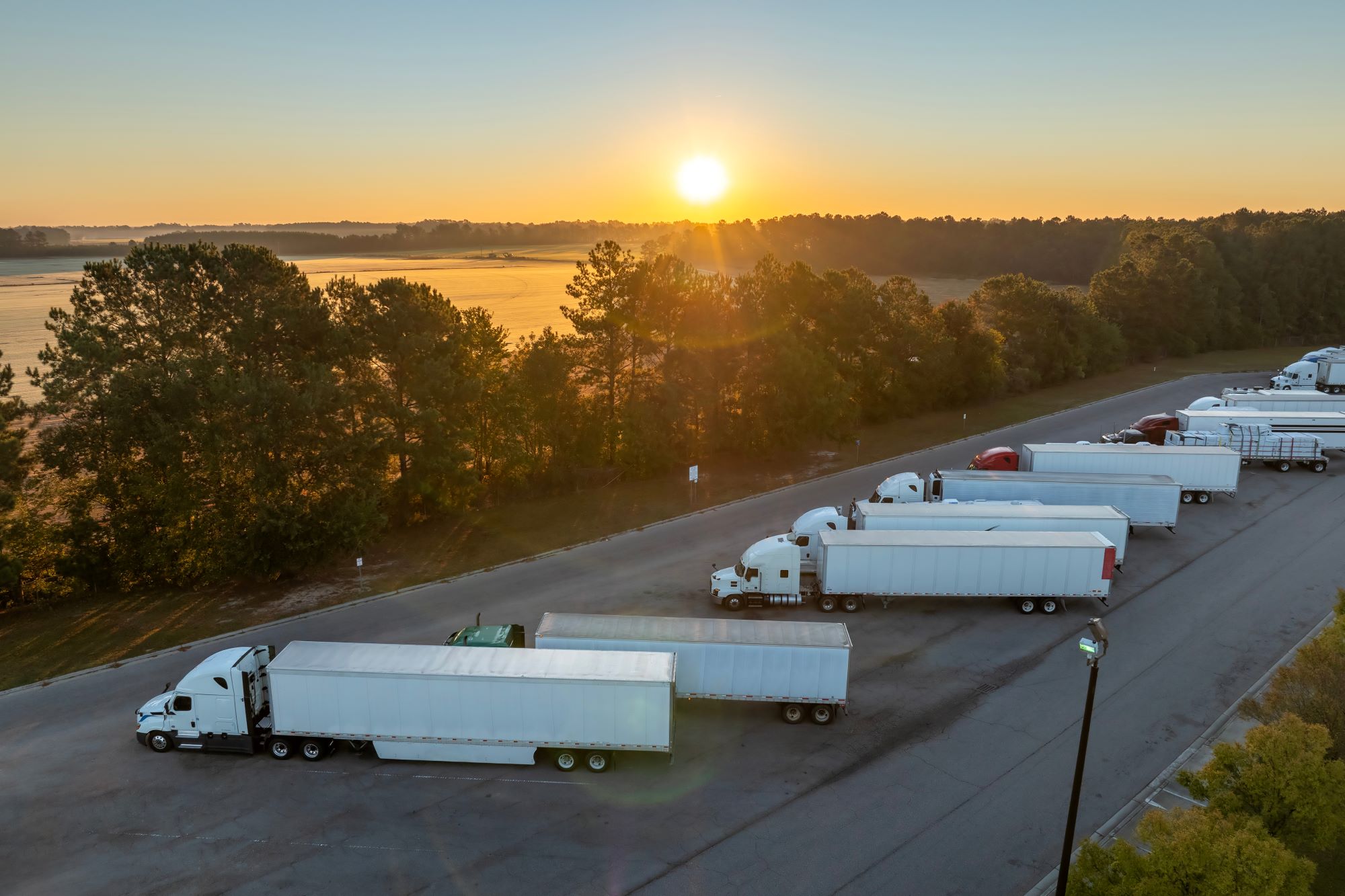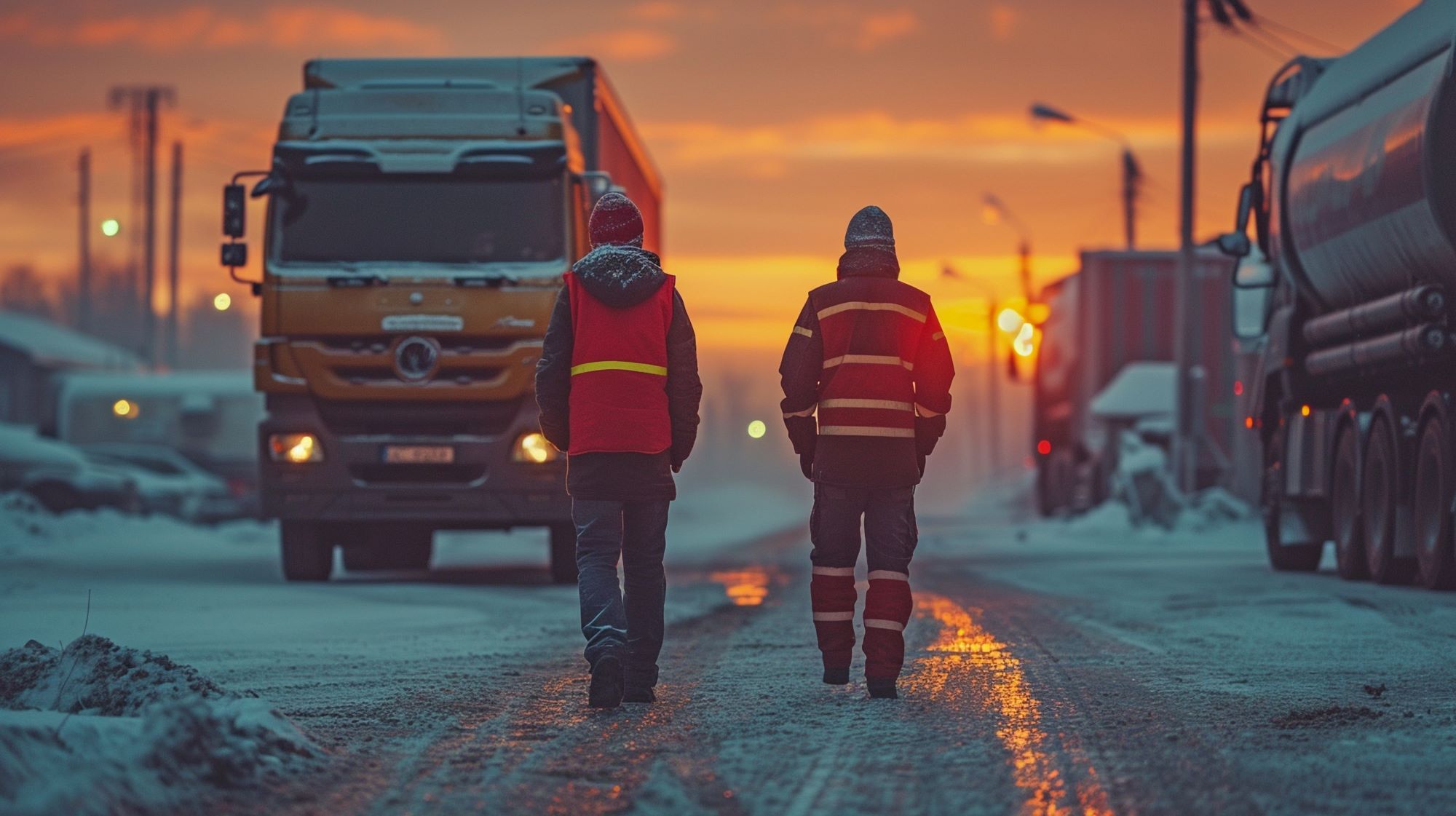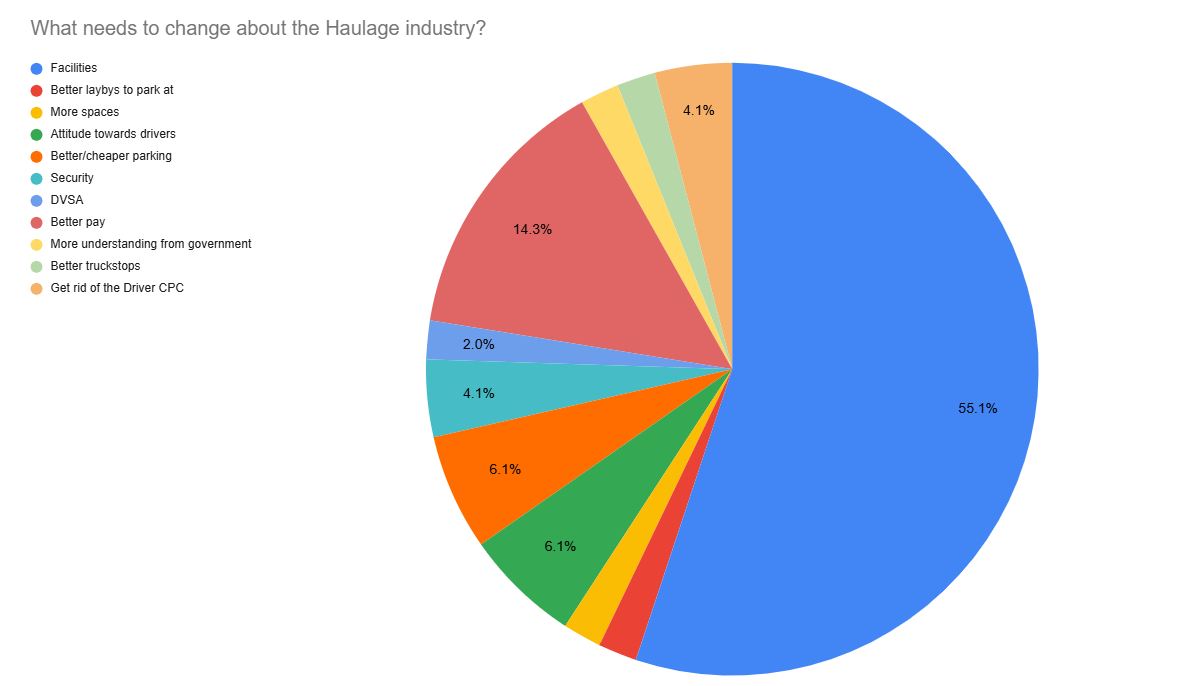
Susie Jones
Vozniki tovornjakov pozivajo k reformi panoge
Ustvarjeno: 05. 02. 2025
•
Posodobljeno: 05. 02. 2025
Trenutno je v Združenem kraljestvu med vozniki težkih tovornih vozil le 1 % vseh voznikov ženskega spola - ta delež se je v zadnjem desetletju povečal za 144 %, saj je bilo uvedenih več pobud za spodbujanje raznolikosti in odpravo pomanjkanja voznikov.
V članku Fleetpoint so opisani številni načini, kako bi lahko industrija privabila več žensk v panogo:
ustvarjanje spodbudnega in prijaznega delovnega okolja.
Posodobitev infrastrukture in udobja.
Prilagodljiva in družini prijazna ureditev dela.
oblikovanje jasnih poti za poklicno rast.
Kljub temu so vozniki na družbenih medijih trdili, da je treba te dolgotrajne izzive v panogi obravnavati za vse, preden se uvedejo nove pobude za odpravo pomanjkanja voznikov.
Pomanjkanje voznikov - kje je zdaj panoga?
Pomanjkanje voznikov je bilo za prevozno industrijo stalno vprašanje, po COVID-19 in brexitu pa je doseglo kritično raven. Leta 2024 je v Evropi, na Norveškem in v Združenem kraljestvu manjkalo več kot 233.000 voznikov tovornjakov - do leta 2028 bo to število zaradi staranja delovne sile preseglo 745.000.
Industrija se še vedno spopada s posledicami in si prizadeva za izvajanje novih pobud za spodbujanje raznolikosti, izboljšanje delovnih pogojev in odpravo vrzeli v delovni sili.
Vlada je izvedla približno [33](https://www.gov.uk/government/topical-events/hgv-driver-shortage-uk-government-response/about#:~:text=We%20extended%20dangerous%20goods%20(ADR,to%20take%20refresher%20training%20now.) ukrepov za reševanje pomanjkanja voznikov tovornih vozil v Združenem kraljestvu. Vključujejo, vendar niso omejeni na:
Povečanje učinkovitosti obstoječih dobavnih verig.
Zagotavljanje podpore in usposabljanja za nove voznike težkih tovornih vozil.
Razširitev zmogljivosti za testiranje voznikov težkih tovornih vozil.
Izboljšanje postopkov izdaje dovoljenj.
Izboljšanje pogojev.
Zagotavljanje stabilnosti verige oskrbe z gorivi.

Kaj je treba spremeniti? Vozniki so povedali svoje mnenje.
49 % voznikov na družbenih omrežjih je menilo, da je treba spremembe uvesti ne glede na spol, 27 % voznic tovornih vozil pa se je strinjalo, da se mora sektor razvijati za vse. 24 % jih je izjavilo, da delo ni več privlačno, kar kaže na potrebo po spremembah v panogi. Kaj torej vozniki želijo, da se spremeni?
Objekti
55 % jih je želelo izboljšati infrastrukturo za vse:
"Treba je zagotoviti boljše zmogljivosti in boljšo obravnavo. Celotna panoga je v razsulu, z nami pa slabo ravnajo."
"Udobje je grozno za vse voznike, moške in ženske."
Novembra 2024 je raziskava Transport Focus pokazala, da sta dve tretjini voznikov nezadovoljni s postajališči za tovornjake - veliko težav povzročajo umazana oprema, slaba ponudba hrane in pomanjkanje prostora za druženje.
Vlada in panoga tovornega prometa sta sprejeli pomembne ukrepe in vložili 14 milijonov funtov za spodbujanje inovacij in izboljšanje delovnih pogojev.
Oktobra 2024 je 23 uspešnih prosilcev prejelo do 4,5 milijona funtov za izboljšanje svojih postajališč za tovornjake. Nadgradnje bodo vključevale nove prhe, restavracije in izboljšane varnostne funkcije, ki bodo voznikom omogočile večjo varnost. Poleg tega bo v okviru programa ustvarjenih približno 430 parkirnih mest za težka tovorna vozila.
Plačilo
Na drugem mestu je boljše plačilo, saj je 14 % voznikov menilo, da bi višje plače spodbudile večje število voznikov k zaposlitvi v panogi:
"Naj bo privlačna za vse, zvišajte plače."
Zvišanje plač bo za vodilne v panogi pomenilo velik strošek. Če bi se povprečna plača voznika tovornjaka zvišala v skladu z nacionalno plačo za življenjski standard, bi lahko upravljavci voznih parkov letno prejeli dodatnih 1,5 milijarde funtov.
Kljub temu bodo naložbe izboljšale stopnjo zadržanja, zmanjšale stroške zaposlovanja in stroške usposabljanja. Z višjimi plačami bi poklic postal privlačnejši ne le za nove udeležence, temveč bi tudi priznali ključno vlogo, ki jo imajo vozniki pri ohranjanju dobavne verige.
Odnos do voznikov
V zadnjih letih se je mnenje javnosti o voznikih tovornjakov močno spremenilo. Življenje voznikov tovornjakov je bilo v filmih in priljubljenih medijih pogosto romantizirano, zaradi česar so mnogi prepričani, da jim je lahko. Vendar pa so jih predstavljali tudi kot delavne junake, kar se je sčasoma poslabšalo.
Proti koncu 20. stoletja se je dojemanje spremenilo, saj so se delovne razmere zaostrile, vozniki tovornjakov pa so bili deležni nepravičnih stereotipov - pogosto zaradi napačnega predstavljanja v medijih, včasih pa tudi zaradi nekaj neizkušenih voznikov. Ti negativni stereotipi so se zmanjšali med pandemijo COVID-19, ko je javnost začela ceniti voznike tovornjakov.
Danes se vozniki tovornjakov spoštujejo, vendar je panoga še vedno zaznamovana z negativnimi stereotipi in stališči. 6 % voznikov si želi, da bi se to spremenilo:
"Ko se spomnim na Covid, so nas imeli za junake, vendar se je potem vse vrnilo v normalno stanje. Nič čudnega, da sedanji vozniki, moški in ženske, želijo zapustiti to panogo. Naveličani so nesramnega ravnanja, s katerim se vsakodnevno soočajo."
"Lepo bi bilo, če te ne bi obravnavali, kot da si revež."
V zadnjih letih so družbeni mediji začeli izpodbijati in spreminjati negativne predstave. Številni vozniki na platformah, kot sta TikTok in Instagram, izmenjujejo informacije o svoji vlogi, razblinjajo napačne predstave in si pridobivajo spoštovanje ljudi zunaj panoge.
Povratne informacije kažejo, da mora panoga tovornega prometa nujno izvesti spremembe, s katerimi bi privabila in zadržala obstoječe in nove voznike. Premajhna zastopanost žensk je še vedno velik izziv, zato so naložbe v objekte, ki bodo zadovoljili njihove potrebe, ključnega pomena. Vendar pa morajo biti te naložbe vključujoče in koristne za celotno delovno silo.

V katerih državah primanjkuje voznikov tovornjakov?
Najbolj so bile prizadete države v Evropi, kjer številna podjetja za prevoz tovornjakov ne morejo širiti svoje dejavnosti, ker ne morejo najti usposobljenih delavcev.
V Evropi se populacija voznikov tovornjakov stara povprečna starost je 47 let. Ena tretjina voznikov tovornjakov je starejša od 55 let in se bo predvidoma upokojila v naslednjih desetih letih. Poleg tega je manj kot 5 % voznikov tovornjakov v Evropi mlajših od 25 let, kar kaže na vrzel, ki bo nastala, ko se bo starajoča se delovna sila upokojila.
Ali obstaja dan hvaležnosti voznikov tovornjakov?
Dan voznikov tovornih vozil poteka 22. januarja, ustanovilo pa ga je podjetje NN1 Personnel. Namen dneva je počastiti voznike tovornjakov in vse, kar naredijo za gospodarstvo in družbo.
Kakšne so napovedi za panogo tovornega prometa za leto 2025?
Iz našega bloga [The Road Ahead for 2025] (https://snapacc.com/newsroom/the-road-ahead-for-2025-truck-industry-trends-to-expect/) je razvidno, da bodo v tem letu v panogi tovornega prometa v ospredju naslednje stvari:
Izkoriščanje prednosti umetne inteligence.
Odpravljanje razlik med spoloma in pomanjkanja voznikov.
Spodbujanje okolju prijaznejše industrije.
Povečanje tovornega prometa na dolge razdalje.



